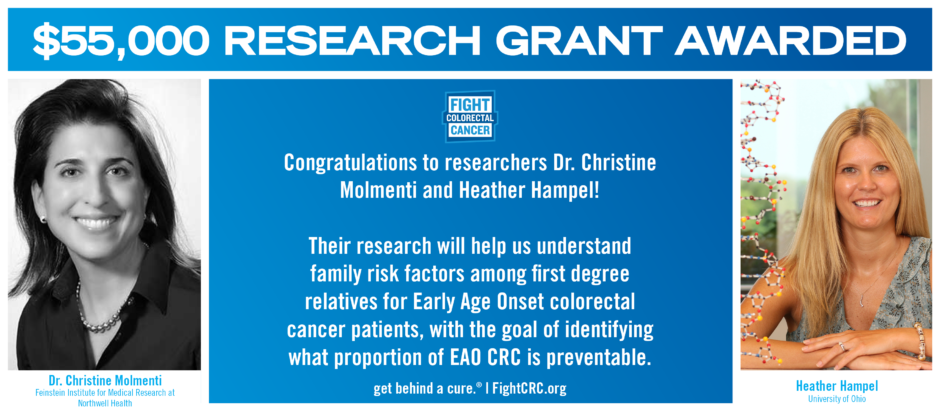Contents
The School Principal as Leader: Guiding Schools to Better Teaching and Learning
- The Principal as Leader: An Overview
- Five Key Responsibilities
Click here to download the full report:![]() The School Principal as Leader: Guiding Schools to Better Teaching and Learning
The School Principal as Leader: Guiding Schools to Better Teaching and Learning
Shaping a vision of academic success for all students
Although they say it in different ways, researchers who have examined education leadership agree that effective principals are responsible for establishing a schoolwide vision of commitment to high standards and the success of all students.
Newcomers to the education discussion might find this puzzling: Hasn't concern with the academic achievement of every student always topped principals' agendas? The short answer is, no. Historically, public school principals were seen as school managers,5 and as recently as two decades ago, high standards were thought to be the province of the college bound. "Success" could be defined as entry-level manufacturing work for students who had followed a "general track," and low-skilled employment for dropouts. Only in the last few decades has the emphasis shifted to academic expectations for all.
"Having high expectations for all is one key to closing the achievement gap between advantaged and less advantaged students."
This change comes in part as a response to twin realizations: Career success in a global economy depends on a strong education; for all segments of U.S. society to be able to compete fairly, the yawning gap in academic achievement between disadvantaged and advantaged students needs to narrow. In a school, that begins with a principal's spelling out "high standards and rigorous learning goals," Vanderbilt University researchers assert with underlined emphasis. Specifically, they say, "The research literature over the last quarter century has consistently supported the notion that having high expectations for all, including clear and public standards, is one key to closing the achievement gap between advantaged and less advantaged students and for raising the overall achievement of all students."6
An effective principal also makes sure that notion of academic success for all gets picked up by the faculty and underpins what researchers at the University of Washington describe as a schoolwide learning improvement agenda that focuses on goals for student progress.7 One middle school teacher described what adopting the vision meant for her. "My expectations have increased every year," she told the researchers. "I've learned that as long as you support them, there is really nothing [the students] can't do."8
"Seek Out the Best Preparation You Can Find"Advice to Teachers Interested in Becoming a Principal"There's a tradition of teachers who are really excellent exemplars in the classroom of saying, 'I don't want to be a principal because it has nothing to do with instruction,'" says Linda Darling-Hammond, a leading authority on education policy and the teaching profession. [See Q&A with her.] "But one of the things we found in our study was that as some of those people were reached out to and got the message that being a principal could be about... building the quality of instruction, they said, 'Oh, well I might actually want to do that.' They've become spectacular school principals, and we've seen them in action.So number one, do it if that's what you're passionate about. "Number two, seek out the best preparation you can find for instructional management, for organizational development, for change management - for these things that we know matter because [being a principal] is a different use of your skills and talents. There is a broader knowledge base to capture, and not every place you may look to build your skills will have those pieces in place. Be aggressive about finding the right support and training for yourself. "Third, collaborate, collaborate, collaborate. Go into this with the idea that, 'I'm going to build a team. It's not going to just have to be me. My job is to really find the expertise and the skills and the abilities of the people that I work with, cultivate those, glue them together.' You will be both a more successful principal and you will be a saner principal who has at least a little bit of a life beyond all of the effort that you put into the work in the schools." |
So, developing a shared vision around standards and success for all students is an essential element of school leadership. As the Cheshire cat pointed out to Alice, if you don't know where you're going, any road will lead you there.
Creating a climate hospitable to education
Effective principals ensure that their schools allow both adults and children to put learning at the center of their daily activities. Such "a healthy school environment," as Vanderbilt researchers call it, is characterized by basics like safety and orderliness, as well as less tangible qualities such as a "supportive, responsive" attitude toward the children and a sense by teachers that they are part of a community of professionals focused on good instruction.9
Is it a surprise, then, that principals at schools with high teacher ratings for "instructional climate" outrank other principals in developing an atmosphere of caring and trust? Or that their teachers are more likely than faculty members elsewhere to find the principals' motives and intentions are good?10
One former principal, in reflecting on his experiences, recalled a typical staff meeting years ago at an urban school where "morale never seemed to get out of the basement." Discussion centered on "field trips, war stories about troubled students, and other management issues" rather than matters like "using student work and data to fine-tune teaching." Almost inevitably, teacher pessimism was a significant barrier, with teachers regarding themselves as "hardworking martyrs in a hopeless cause."11
To change this kind of climate - and begin to combat teacher isolation, closed doors, negativism, defeatism and teacher resistance - the most effective principals focus on building a sense of school community, with the attendant characteristics. These include respect for every member of the school community; "an upbeat, welcoming, solution-oriented, no-blame, professional environment;" and efforts to involve staff and students in a variety of activities, many of them schoolwide.12
Engaging parents and the community: continued interest, uncertain evidence
Many principals work to engage parents and others outside the immediate school community, such as local business people. But what does it take to make sure these efforts are worth the time and toil required? While there is considerable interest in this question, the evidence on how to answer it is relatively weak. For example, the Minnesota-Toronto study found that in schools with higher achievement on math tests, teachers tended to share in leadership and believed that parents were involved with the school. The researchers noted, however, that "the relationships here are correlational, not causal," and the finding could be at odds with another finding from the study.13 Separately, the VAL-ED principal performance assessment (developed with support from The Wallace Foundation) measures principals on community and parent engagement.14 Vanderbilt researchers who developed the assessment are undertaking further study on how important this practice is in affecting students, achievement. In short, the principal's role in engaging the external community is little understood.
Principals play a major role in developing a "professional community" of teachers who guide one another in improving instruction.
Cultivating leadership in others
A broad and longstanding consensus in leadership theory holds that leaders in all walks of life and all kinds of organizations, public and private, need to depend on others to accomplish the group's purpose and need to encourage the development of leadership across the organization.15 Schools are no different. Principals who get high marks from teachers for creating a strong climate for instruction in their schools also receive higher marks than other principals for spurring leadership in the faculty, according to the research from the universities of Minnesota and Toronto.16
In fact if test scores are any indication, the more willing principals are to spread leadership around, the better for the students. One of the most striking findings of the universities of Minnesota and Toronto report is that effective leadership from all sources - principals, influential teachers, staff teams and others - is associated with better student performance on math and reading tests.
The relationship is strong albeit indirect: Good leadership, the study suggests, improves both teacher motivation and work settings. This, in turn, can fortify classroom instruction. "Compared with lower-achieving schools, higher-achieving schools provided all stakeholders with greater influence on decisions," the researchers write.17 Why the better result? Perhaps this is a case of two heads - or more - being better than one: "The higher performance of these schools might be explained as a consequence of the greater access they have to collective knowledge and wisdom embedded within their communities," the study concludes.18
Principals may be relieved to find out, moreover, that their authority does not wane as others' waxes. Clearly, school leadership is not a zero-sum game. "Principals and district leaders have the most influence on decisions in all schools; however, they do not lose influence as others gain influence," the authors write.19 Indeed, although "higher-performing schools awarded greater influence to most stakeholders...little changed in these schools' overall hierarchical structure."20
University of Washington research on leadership in urban school systems emphasizes the need for a leadership team (led by the principal and including assistant principals and teacher leaders) and shared responsibility for student progress, a responsibility "reflected in a set of agreements as well as unspoken norms among school staff."21
Effective principals studied by the University of Washington urged teachers to work with one another and with the administration on a variety of activities, including "developing and aligning curriculum, instructional practices, and assessments; problem solving; and participating in peer observations."22 These leaders also looked for ways to encourage collaboration, paying special attention to how school time was allocated. They might replace some administrative meeting time with teacher planning time, for example.23 The importance of collaboration gets backing from the Minnesota-Toronto researchers, too. They found that principals rated highly for the strength of their actions to improve instruction were also more apt to encourage the staff to work collaboratively.24
More specifically, the study suggests that principals play a major role in developing a "professional community" of teachers who guide one another in improving instruction. This is important because the research found a link between professional community and higher student scores on standardized math tests.25 In short, the researchers say, "When principals and teachers share leadership, teachers' working relationships with one another are stronger and student achievement is higher."26
What does "professional community" look like? Its components include things like consistent and well-defined learning expectations for children, frequent conversations among teachers about pedagogy, and an atmosphere in which it's common for teachers to visit one another's classrooms to observe and critique instruction.27
A central part of being a great leader is cultivating leadership in others.
Most principals would welcome hearing what one urban school administrator had to say about how team-based school transformation works at its best: "like a well-oiled machine," with results that could be seen in "student behavior, student conduct, and student achievement."28
Improving instruction
Effective principals work relentlessly to improve achievement by focusing on the quality of instruction. They help define and promote high expectations; they attack teacher isolation and fragmented effort; and they connect directly with teachers and the classroom, University of Washington researchers found. 29
Effective principals also encourage continual professional learning. They emphasize research-based strategies to improve teaching and learning and initiate discussions about instructional approaches, both in teams and with individual teachers. They pursue these strategies despite the preference of many teachers to be left alone.30
In practice this all means that leaders must become intimately familiar with the "technical core" of schooling - what is required to improve the quality of teaching and learning.31
A PROFILE IN LEADERSHIP: DEWEY HENSLEYNearly all 390 students at Louisville's J. B. Atkinson Academy for Excellence in Teaching and Learning live in poverty. But from 2006 to 2011, principal Dewey Hensley showed this needn't stand in the way of their succeeding in school. Under Hensley's watch, students at Atkinson, once one of the lowest performing elementary schools in Kentucky, doubled their proficiency rates in reading, math and writing. Most recently, the school was one of only 17 percent in the school district that met all of its "adequate yearly progress" goals under the federal No Child Left Behind Act. Hensley's is not a tale of lonely-at-the-top heroics, however. Rather, it is a story about leadership that combines a firm belief in each child's potential with an unrelenting focus on improving instruction - and a conviction that principals can't go it alone. "Building a school is not about bricks," Hensley says. "It's about teachers. From inside out, you have to build the strengths. I'm not the leader. I'm a leader. I've tried to build strong leaders across the board." Today Hensley is chief academic officer of Jefferson County, Ky., Public Schools. Principals there and elsewhere could learn a lot from how he led Atkinson with a style that mirrors in many ways the characteristics of effective school leadership identified in research. Shaping a vision of academic success for all students Creating a climate hospitable to education Cultivating leadership in others He also encouraged his teachers to learn from one another. Science teacher Heather Lynd recalls the day Hensley visited her classroom and then asked her to lead a faculty meeting on anchor charts, annotated diagrams that can be used to explain everything from the water cycle to punctuation tips. "He's built on teachers' strengths to share them with others," says reading specialist Lori Atherton. "That creates leadership." Improving instruction Hensley also encouraged teachers to do skill building on their own. As a result, Atkinson teachers began attaining certification at a feverish pace from the National Board for Professional Teaching Standards, a private group that offers teachers an advanced credential based on rigorous standards. Finally, Hensley focused on getting students the instruction that tests and observations showed they needed. For example, Hensley paired struggling 1st, 2nd and 3rd graders with National Board-certified teachers who gave them intensive help in reading and writing until they reached grade level. Managing people, data and processes Such methods did not win plaudits from everyone; half the faculty transferred after his first year. But as time went by, the number of teachers seeking to leave the school declined to a trickle and the list of those seeking to transfer in ballooned. Moreover, if winning over skeptics is any indication of success, Hensley points with pride to a comment years later from a veteran teacher who had initially opposed his changes at Atkinson: "She said, ‘They sent a lot of people here to fix this school. You're the only one who taught us how.'" |
Principals themselves agree almost unanimously on the importance of several specific practices, according to one survey, including keeping track of teachers' professional development needs and monitoring teachers' work in the classroom (83 percent).32 Whether they call it formal evaluation, classroom visits or learning walks, principals intent on promoting growth in both students and adults spend time in classrooms (or ensure that someone who's qualified does), observing and commenting on what's working well and what is not. Moreover, they shift the pattern of the annual evaluation cycle to one of ongoing and informal interactions with teachers.
The Minnesota-Toronto study paints a picture of strong and weak instructional leadership. "Both high- and low-scoring principals said that they frequently visit classrooms and are ‘very visible,'" the researchers write. "However, differences between principals in the two groups come into sharp focus as they describe their reasons for making classroom visits. High-scoring principals frequently observed classroom instruction for short periods of time, making 20 to 60 observations a week, and most of the observations were spontaneous. Their visits enabled them to make formative observations that were clearly about learning and professional growth, coupled with direct and immediate feedback. High-scoring principals believed that every teacher, whether a first-year teacher or a veteran, can learn and grow.
Effective leaders view data as a means not only to pinpoint problems but to understand their nature and causes.
"... In contrast, low-scoring principals described a very different approach to observations. Their informal visits or observations in classrooms were usually not for instructional purposes. Even informal observations were often planned in advance so that teachers knew when the principal would be stopping by. The most damaging finding became clear in reports from teachers in buildings with low-scoring principals who said they received little or no feedback after informal observations."33
It is important to note that instructional leadership tends to be much weaker in middle and high schools than in elementary schools.34 Unlike their elementary school counterparts, secondary school principals cannot be expected to have expertise in all the subject areas their schools cover, so their ability to offer guidance on instruction is more limited. The problem is that those who are in a position to offer instructional leadership - department chairs - often are not called on to do so. One suggestion is that the department head's job "should be radically redefined" so whoever holds the post is "regarded, institutionally, as a central resource for improving instruction in middle and high schools."35
As noted above, a central part of being a great leader is cultivating leadership in others. The learning-focused principal is intent on helping teachers improve their practice either directly or with the aid of school leaders like department chairs and other teaching experts.
Managing people, data and processes
"In the great scheme of things," noted one research report, "...schools may be relatively small organizations. But their leadership challenges are far from small, or simple."36 To get the job done, effective leaders need to make good use of the resources at hand. In other words, they have to be good managers.
Effective leaders studied by University of Washington researchers nurtured and supported their staffs, while facing the reality that sometimes teachers don't work out. They hired carefully, but - adhering to union and district personnel policies - they also engaged in "aggressively weeding out individuals who did not show the capacity to grow."37
When it comes to data, effective principals try to draw the most from statistics and evidence, having "learned to ask useful questions" of the information, to display it in ways that tell "compelling stories" and to use it to promote "collaborative inquiry among teachers."38 They view data as a means not only to pinpoint problems but to understand their nature and causes.39
Principals also need to approach their work in a way that will get the job done. Research behind VAL-ED (the Vanderbilt Assessment of Leadership in Education tool to assess principal performance, developed by researchers at Vanderbilt University) suggests that there are six key steps - or "processes" - that the effective principal takes when carrying out his or her most important leadership responsibilities: planning, implementing, supporting, advocating, communicating and monitoring.40 The school leader pressing for high academic standards would, for example, map out rigorous targets for improvements in learning (planning), get the faculty on board to do what's necessary to meet those targets (implementing), encourage students and teachers in meeting the goals (supporting), challenge low expectations and low district funding for students with special needs (advocating), make sure families are aware of the learning goals (communicating), and keep on top of test results (monitoring).41
Principals - and the people who hire and replace them - need to be aware that school improvement does not happen overnight. A rule of thumb is that a principal should be in place about five to seven years in order to have a beneficial impact on a school. In fact, the average length of a principal's stay in 80 schools studied by the Minnesota-Toronto researchers was 3.6 years. They further found that higher turnover was associated with lower student performance on reading and math achievement tests, apparently because turnover takes a toll on the overall climate of the school.42 "It is far from a trivial problem," the researchers say. "Schools experiencing exceptionally rapid principal turnover, for example, are often reported to suffer from lack of shared purpose, cynicism among staff about principal commitment, and an inability to maintain a school-improvement focus long enough to actually accomplish any meaningful change."43 The lesson? Effective principals stay put.
IMPROVING SCHOOL LEADERSHIP
The simple fact is that without effective leaders most of the goals of educational improvement will be very difficult to achieve. Absent attention to that reality, we are in danger of undermining the very standards and goals we have set for ourselves. Fortunately, we have a decade of experience and new research demonstrating the critical importance of leadership for school principals and documenting an empirical link between school leadership and student growth. And we have the benefit of the professional standards developed by ISLLC and principal evaluation tools like VAL-ED.
Still, the lives of too many principals, especially new principals, are characterized by "churn and burn," as the turnover findings bear out. So what can be done to lessen turnover and provide all teachers and students with the highly skilled school leadership they need and deserve? In other words, how do we create a pipeline of leaders who can make a real difference for the better, especially in troubled schools?
A pipeline for effective leadership
Wallace's work over the last decade suggests such a pipeline would have four necessary and interlocking parts:
- Defining the job of the principal and assistant principal. Districts create clear, rigorous job requirements that detail what principals and assistant principals must know and do, and that emerge from what research tells us are the knowledge, skills and behaviors principals need to improve teaching and learning.
- Providing high-quality training for aspiring school leaders. Principal training programs, whether run by universities, nonprofits or districts, recruit and select only the people with the potential and desire to become effective principals in the districts the programs feed into. The programs provide the future leaders with high-quality training and internships that reflect the realities education leaders face in the field.
- Hiring selectively. Districts hire only well-trained candidates for principal and assistant principal jobs.
- Evaluating principals and giving them the on-the-job support they need. Districts regularly evaluate principals, assessing the behaviors that research tells us are most closely tied to improving teaching and student achievement. Districts then provide professional develop- ment, including mentoring, that responds to what the evaluations find for each individual.
Coordination of state and district efforts
Effective school leadership depends on support from district and state officials. Except for the most entrepreneurial, principals are unlikely to proceed with a leadership style focused on learning if the district and state are unsupportive, disinterested or pursuing other agendas.
As one of the major Wallace-funded studies reports, central offices need to be transformed so that the work of teaching and learning improvement can proceed.44 That is to say central offices need to "re-culture" themselves so they focus less on administration and more on supporting principals to improve instruction. As for states: Through policy, accreditation and funding for principal training programs, and other levers, they have a major role to play in getting schools the leadership they need. If the states and districts can do the difficult work of coordinating their various efforts, so much the better.45
Leadership and the transformation of failing schools
Armed with what we've learned about the potential for leadership over the last decade, we have cause for optimism that the education community's long neglect of leadership is at last coming to an end. We still have a lot to learn, but we have already learned a great deal. In the face of this growing body of knowledge and experience, it is clear that now is the time to step up efforts to strengthen school leadership. Without effective principals, the national goal we've set of transforming failing schools will be next to impossible to achieve.
But with an effective principal in every school comes promise.
THE PRINCIPAL-TEACHER CONNECTION: A SCHOLAR'S VIEW
Linda Darling-Hammond is the Charles E. Ducommun Professor of Education at Stanford University. One of the nation's leading authorities on education policy as well as teachers and the teaching profession, Darling-Hammond has served on The Wallace Foundation's board of directors since 2009. She was interviewed in April 2012 by Lucas Held, Wallace's communications director. These are edited excerpts of the interview.
Lucas Held: What do we know about the link between effective teaching and good principals? You note in your 2010 book, The Flat World and Education: How America's Commitment to Equity Will Determine Our Future, that good principals are the number one reason why teachers stay in school.
Linda Darling-Hammond: That comes up in survey after survey. If you ask teachers, "What kept you in a school that you're in?" or "What caused you to leave?" administrative leadership and support is one of the most critical elements because everything the teacher does is framed by the way the leadership operates. It is possible to be an effective teacher in a poorly led school but it's not easy. That takes a toll. And it is possible to become an ever more effective and successful teacher in a well-led school. Teachers go into the profession to be successful with kids. If they are working with a leadership team led by a principal who understands what it takes to be successful with kids, how the organization should be organized, what kind of supports need to be there, how learning for teachers can be encouraged as well as learning for students, how to get the community and the parental supports in place, that lets the teacher do her or his job effectively and achieve the most important intrinsic motivation: success with kids.
LH: Is that connection generally known?
LDH: You would think it would be obvious. But in schools where there has not been much cultivation of leaders, there is often a hunkering down and just saying, "Well, there's leadership over [t]here and there's teaching over here." That misses the boat in terms of creating effective learning organizations.
LH: How do principals and teachers work together to create a collaborative focus on learning?
LDH: In thriving schools you have a professional learning community. If there isn't one, it's something that teachers and leaders have to build together, getting past the closed-door culture which is often inherited in schools: "We're all doing our own thing in our own classroom."
Leaders who are effective often have a distributed leadership approach. The principal functions as a principal teacher who is really focusing on instruction along with [and] by the side of teachers - not top down mandates and edicts. When principals are trying to help create such a culture, [they] begin to open the doors and say, "Let's talk about our practice. Let's show our student work. Let's go look at each other's classrooms and see what we're doing." Obviously the teachers who will benefit from that can facilitate [matters] by opening their doors and working with each other and bringing ideas to the table. One of the best practices that I've seen when new cultures are being planted is holding the faculty meeting in a different room every time and allowing teachers to talk about strategies they're using that are proving successful. Being willing to open your door and say, "Here's what's going on in my little kingdom here" is the beginning of planting seeds to create a collaborative culture where learning is always building on what teachers and leaders are doing together.
LH: Is it your sense that most schools are operating this way or does this remain the exception?
LDH: More and more teachers are willing and eager to collaborate with one another. More and more leaders are becoming aware of how important that is. But it is certainly not everywhere. There [was] an interesting survey not long ago, The Schools and Staffing Survey, which the federal government does. It asked teachers, "How many of you have the opportunity to collaborate with each other?" Something like 80 or more percent said, "Yes, I have that opportunity." But [when the survey] asked how many would strongly agree or would agree that there is a collaborative culture in their schools where people collaborate frequently, only 15 percent said that. What it says to me is that we have a little bit of collaboration going around everywhere, but we have a lot of collaboration going on in very few places.
One reason for that is that we design our schools in most cases still in the United States based on the factory model of 100 years ago, where the idea was that teachers are only working when they're in classrooms instructing children. If you look at schools in many countries in Europe and Asia, teachers have about 15 hours a week or more where they collaborate with each other on planning, to do action research, to do lesson study, to go into each other's classrooms and look at what they're doing, to meet with parents and students about issues that have come up or that they're trying to address. That differential use of time allows teachers to continually get better at what they're doing. We need to restructure schools to be able to do that.
LH: What you're saying, in a sense, is that a collaborative learning environment is so important that time needs to be carved out to focus on building that work.
LDH: That's right - and being sure that whenever somebody is doing something right, it's getting shared, and whenever somebody has a problem, they have people to go to to help them solve their problem. [There are] very interesting studies about gains in student achievement that have gone on in recent years, and a couple of them are particularly important. They find that there's much greater gain in student achievement in a school when people work collaboratively in teams and when teams of teachers stay together over a period of time and build their collective know ledge and collective capacity. The whole can be greater than the sum of the parts. That's one of the major jobs of good leadership.
LH: Do teachers need to understand what effective principals do?
LGH: I think so for many reasons. One is so that [they] know what to expect. [Another] is that there's increasing use of 360-evaluations, where everyone is inputting to perceptions about the effectiveness of their leaders. [It's important] also [to understand] how to work as a team, how to be supportive of one another.
A lot of a principal's work can be invisible to teachers when they‘re in the classroom. I often use the metaphor of the conductor of the orchestra. We watch the conductor, we're in the audience and we say, "I could do that. Piece of cake. Right?" That's true of teachers' skill in the classroom; it's also true of principals' skill in orchestrating the collective, harmonious work of teachers. [The principal's work] includes organizational design and development. It includes instructional leadership and the development of learning opportunities for kids and teachers. It includes change management, moving an organization from where it is to where it needs to be. It includes outreach with various publics and communities that maintain support for the school - the school board, the parent community, others in the community who are resources to the work of the school.... It's important to understand those things, both to be able to expect and support them, and to also provide good feedback and evaluation.
LH: What advice would you give teachers to become part of the process of making their schools better places?
LDH: Obviously everyone works in their own vineyard, in their own classroom. Beyond that, it's important for teachers to learn from the beginning of their careers - and throughout their careers - how to be good collaborators and community members, how to reach out to others (both to offer to share ideas and thoughts, and to ask and learn from others), how to propose ways that collaboration may be able to take root, to sometimes reach out to the principal and say, "Can I help with this? Is there a way that I can facilitate some of this work getting done or enable you to be able to facilitate it?" There is still quite often this idea that each teacher is a lone agent and the principal is a lone agent, just like the superwoman or superman image, with the cape. And in fact, sometimes school leaders are alone and isolated and may not even realize that they can get help from the faculty to move an agenda forward.
LH: Sounds like a two-way street.
LDH: Absolutely. There actually is a lot to learn about how to be a good collaborator, how to manage differences of opinion, how to talk to each other in ways that will be productive and then get to a place where the conversations can be better and richer. In our efforts to develop the profession, we have to make sure that kind of learning is available to everyone.
LH: Let's talk about some of the features that distinguish high-performing schools from low-performing schools.
LDH: One of the features that we've talked about is lots of collaboration around good practice. That's built on a strong foundation of trust. Some really important research [has] looked at the relational elements of effective schools. It's not just focusing on data about the test scores and so on. It's also building trust between and among the professionals, seeing teachers as respected professionals, that is, people not to be mandated to or barked at but as colleagues who have expertise to be orchestrated and shared - and as professionals who want to continue to grow. Finding ways for the perspectives of teachers and other members of the school community to be shared - as a basis for problem solving, as a basis for school improvement planning - is really important.
In highly successful environments, efforts have been made to make it possible for teachers to be successful. That means making sure that they have the instructional resources they need - textbooks and other tools of learning (computers, good curriculum). [It means] that they are asked to work in ways that will allow them to be successful. For example, we know that when a teacher can either loop with the same students or stay in the same or similar grade level for a period of time, they become more skilled than if you say, "Oh, this year you're teaching kindergarten and next year you're going to teach fifth grade, and then I'm going to put you in the fourth and then maybe the seventh." That is, in a way, very disrespectful to teachers, but it also makes them less effective. We know that from research. Respecting the opportunities for teachers to be efficacious in their teaching by giving them the opportunities, the tools and the relationship time with students to be able to be successful [is very important]. That sometimes means reorganizing the school organization so that it supports the work in a more productive way.
Kind Regards,
Peter Smith
Principal















